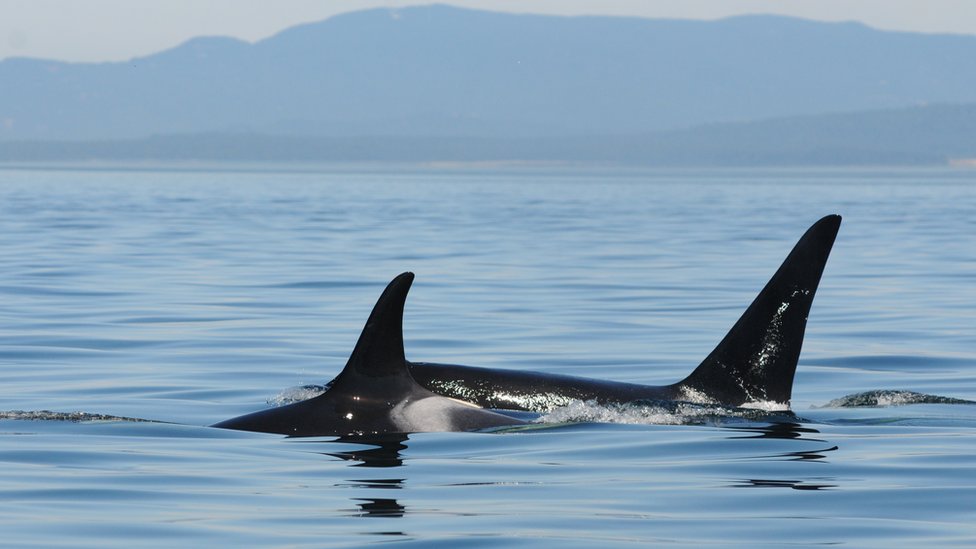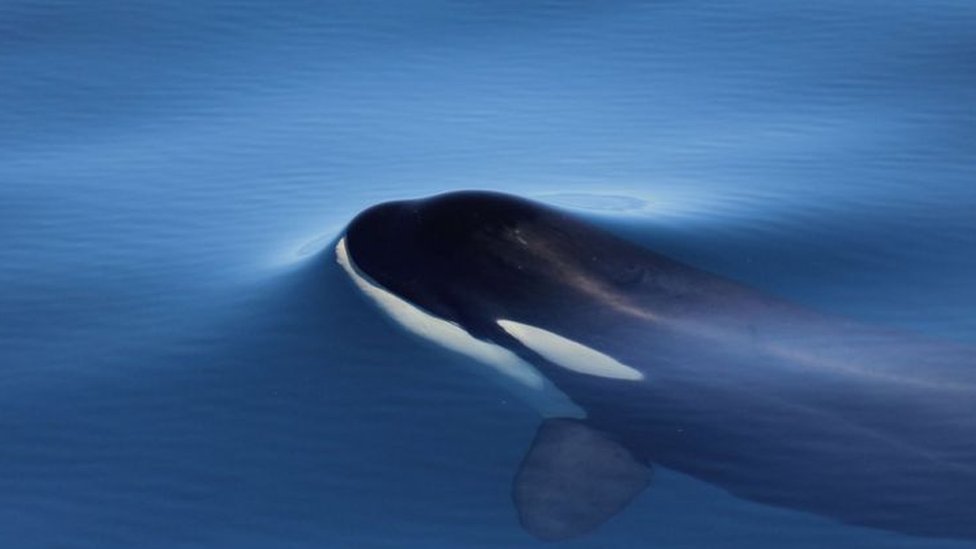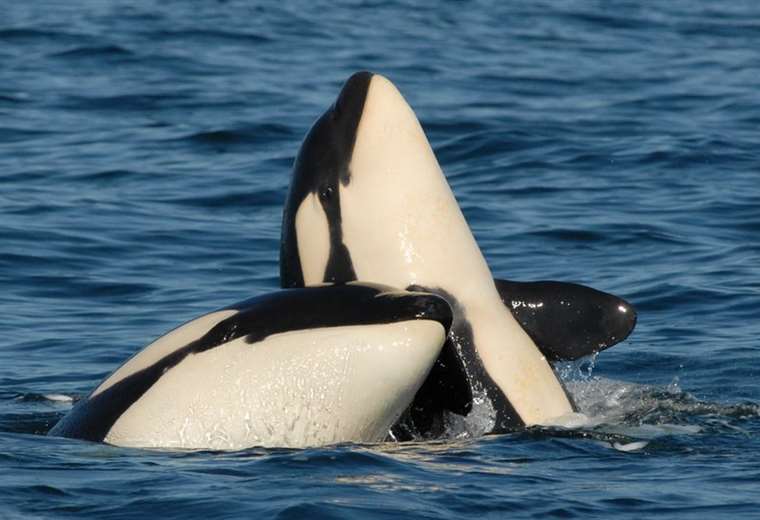February 10, 2023, 5:30 PM
February 10, 2023, 5:30 PM
A study of killer whales in the North Pacific revealed that mothers make a “lifetime sacrifice” when they have children.
raise a child male significantly reduced the chance that a female orca could reproduce again in the future.
The energy they need to feed their children seems to compromise their health, leaving himtos less able to reproduce and raise other young.
“The mothers they sacrifice their own food and their own energy“, explains Professor Darren Croft of the University of Exeter.
Orcas remain closely attached to their families throughout their lives.
But while young female pups become independent when they reach adulthood, males depend on their motherseven demanding a share of the food their matriarchs catch.
Professor Croft described it as a “new insight into the complex social and family life of these amazing animals”.
The decades-long study, published in the journal Current Biologyis part of an ongoing mission to understand the family life of orcas.
It was made possible by the Center for Whale Research (CWR), which has followed the lives of a population of orcas, known as the southerners, for more than 40 years.

Since 1976, the CWR has conducted a comprehensive census of the southern resident population, allowing biologists to study multiple generations to unravel how critical social behavior and family ties directly affect animal survival.
For this research, scientists examined the lives of 40 female orcas between 1982 and 2021 and found that for every live calf, the chance that a mother would conceive another 1-year-old calf was cut in half.
“Our research has shown that calves have a higher chance of survival if their mother is close,” said Michael Weiss, from the University of Exeter and Whale Research Centre.
“We wanted to find out if this help comes at a price and the answer is yes. ‘Killer whale’ mothers pay a high cost in terms of their future reproduction to keep their offspring alive.”
killer whale families
Ken Balcomb initiated the ongoing study of this threatened population of killer whales, which lives in the coastal waters between Vancouver and Seattle. Initially, he wanted to examine the threats to his survival.
Subsequent work continued to reveal mysteries about orca life that could only have been uncovered through decades of study.
Biologists have worked with the CWR to reveal, for example, the vital role of killer whale grandmothers and why, like humans, female killer whales stop reproducing mid-life.
Scientists already knew that mothers and sons “hang out” together well into the male’s adulthood.
“They even feed the salmon they catch to their young,” Croft explained, adding that adult female hatchlings hunt independently.
The researchers think this could be a kind of “evolutionary insurance”, buoyed by the fact that the largest and oldest males father many young.
“If a mother can make her son become that big male in the population, then he will be the father.” [gran parte de la próxima generación]Croft noted.

It may seem paradoxical that such powerful and intelligent animals remain dependent on their mothers throughout their lives, but it seems that males simply do not have to become independent, because their mother remains by their side.
“If my mom cooked me dinner every night, maybe I wouldn’t learn to cook my own dinner,” Croft joked.
“But indirectly, it sounds like it’s in the interest of the mother.”
There are currently only 73 of this killer whale species left, so scientists say they need to understand anything that can help inform decisions about how to protect these marine mammals.
“These southern resident orcas are on a knife edge and are at risk of extinction,” Croft said. “So anything that reduces female reproduction is a concern for this population.”
Remember that you can receive notifications from BBC Mundo. Download the new version of our app and activate them so you don’t miss out on our best content.


















